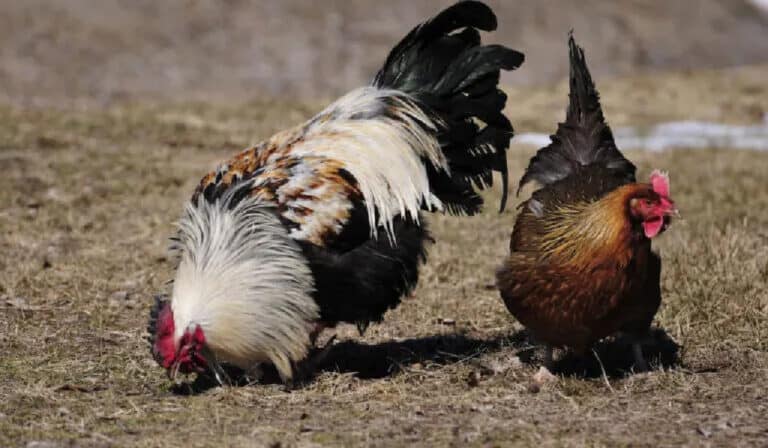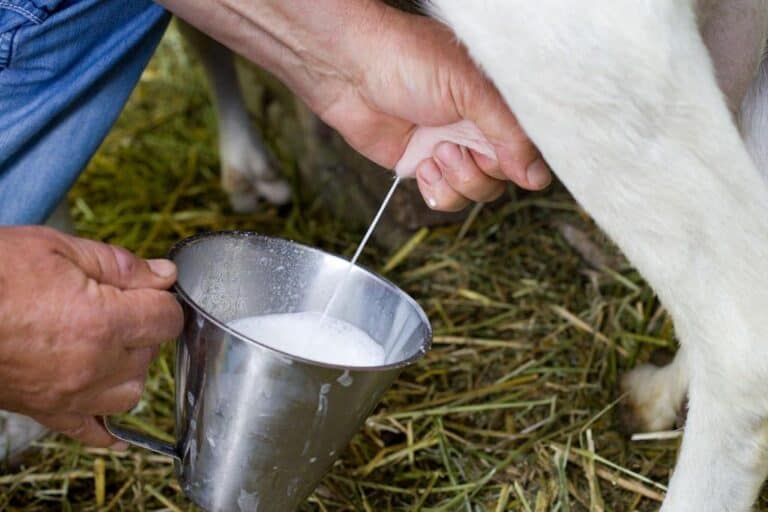Do Free Range Chickens Need Grit if They Have Sand? (Chicken Diet & Digestion)

Raising chickens has become a popular endeavor among small farmers and backyard hobbyists. While there are many benefits to raising free-range chickens, it is important to understand their dietary needs in order to ensure their health and well-being.
Are you wondering if your free-range chickens need grit if they have access to sand? It’s a common question among backyard chicken owners, and the answer may surprise you.
Free-range chickens still need grit if they have sand. The reason is because grit and sand have different functions in the chicken diet.
In this post, we’ll dive into the role of grit and sand in a chicken’s diet and digestion and explore the pros and cons of each to help you determine the best course of action for your feathered friends.
Grit’s Function in Chicken Diet and Digestion
Chickens eat “grit,” which is a small piece of rock or mineral, to help them digest. These particles are typically about the size of a grain of rice or smaller and can include materials such as crushed granite, oyster shells, or even small pebbles.
Chickens do not have teeth to grind their food, so they use grit to help grind up their food in the gizzard. The gizzard is a muscular part of the chicken’s stomach that grinds up food using grit as an abrasive.
Chickens need grit to be able to digest their food well. This is much needed if they eat a lot of coarse or hard things, like whole grains or tough plant matter.
Without grit, chickens might have trouble digesting their food, which could lead to stunted growth, weight loss, or even death. Chickens that are not getting enough grit may also have difficulty producing eggs.
Chicken May Also Need Sand
Chickens may also need sand in their diet. Sand is a type of grit that is made up of small grains of mineral or rock and can be found in many natural environments.
Sand is a versatile and valuable material for chickens and their coops. Not only can it be used as a grit substitute, but it also has the potential to be used as a bedding material for chickens. However, it’s important to use the right type of sand when using it as a bedding material.
For chicken bedding, you can use sand from a river, sand from a bank, coarse sand, or sand from a construction site. These types of sand are larger and coarser than play sand, which is not suitable for use as chicken bedding.
These sands are also less likely to cause crop impurities and other chicken health issues. They are also a good option for moisture management, and they are easy to maintain and clean.
Another reason chickens may need sand in their diet is for their overall health and wellness. Sand has minerals and nutrients that are good for chickens and help them grow and develop.
For example, sand can be a good source of calcium, which is necessary for the formation and maintenance of strong bones and eggshells. And then, chickens can dustbathe in sand, which can help with their feather health and hygiene and prevent parasites and mites.
Do Free Range Chickens Need Grit if They Have Sand?
As we have discussed above, the functions of grit and sand are complementary for chicken. So, yes, free-range chickens need both.
Not all types of sand are created equal. The type of sand that is found in natural environments may not be as suitable for chickens as commercial grit.
Commercial grit is made in a way that gives chickens all the minerals and nutrients they need for their overall health and growth. The type of sand found in nature may not be as clean or free of contaminants as commercial grit.
Another argument for chickens still needing grit even if they have sand is that chickens may not always have access to sand and grit in their environment. The amount of grit and sand that chickens can get depends on the weather and other things in their environment.
Different Types of Grit and Their Uses
There are different types of grit available for chickens, including “starter” grit, which is fine and meant for chicks, and “adult” grit, which is coarser and meant for adult chickens.
Chickens will also need different types of grit depending on their diet. For example, if chickens are consuming a diet that is high in calcium, such as oyster shells, they will need less grit than chickens consuming a diet that is low in calcium.
Chickens rely on two types of grit to help them grind their food in order to get the most out of their feed:
- Insoluble grit, also called flint or granite, is important for a chicken’s digestive health and overall health.
- Soluble grit, such as oyster shell or mineral, helps chickens break down the tougher bits of feed that can be difficult for them to digest alone.
Together, these two types of grit provide chickens with a balanced diet and keep their digestive systems healthy and running smoothly.
As a general rule, insoluble grit should always be available, while soluble grit should only be given when needed, usually in the summer when feed ingredients have less water.
Adding some additional soluble grit can also help if chickens are having trouble passing eggs through the digestive tract.
How Much Grit Should You Feed Free-Range Chickens?
How much grit is needed depends on what the chickens eat, where they live, and how healthy they are overall.
On average, a free range chicken requires 30 to 50 grams of stones or insoluble grit every year. This amount can vary depending on the diet of the chickens. Chickens that consume a diet high in coarse or hard materials, such as whole grains or tough plant material, will require more grit than chickens consuming a diet low in these types of materials.
Chickens that are laying eggs will need grit that dissolves more easily, like oyster shells or minerals, to get the calcium they need to make eggs with strong shells.
In order to budget the right amount of grit for a flock of free-range chickens, it’s recommended to budget one to two tons of grit per year for a flock of 1,000. This can cause egg production to go up by 7%–9.6% and feed consumption to go down by 6.3%–7.1%.
This is due to the fact that with enough grit, chickens are able to digest their food more efficiently, which in turn allows them to absorb more nutrients from their feed.
In general, free-range chickens can feed less grit than chickens kept in cages or for commercial purposes, but you should still leave some next to their food or add one to two cups of commercial grit to their bags of layer seed mixtures.
When to Start Grit for Chickens
It can be difficult for poultry farmers and backyard chicken keepers to know when to begin feeding grit to their chickens. Grit is an important part of a chicken’s diet and is needed for digestion and good health in general. However, the right age to start giving grit to chickens depends on their needs and diet.
For chicks, it is generally recommended to start providing grit around 4-6 weeks of age. At this age, chicks will begin to eat more solid food and will need grit to help grind up and digest their food.
Starter grit, which is fine and meant for chicks, is typically provided during this stage. It’s important to note that chicks should not be given adult grit, as it can be too coarse and can cause damage to their gizzard.
For adult chickens, it is recommended to provide grit at all times. Grit is important for adult chickens because it helps them grind their food in the gizzard and gives them the minerals and nutrients they need to stay healthy and grow.
Adult chickens will also require different types of grit depending on their diet. If chickens are consuming a diet that is high in calcium, such as oyster shells, they will need less grit than chickens consuming a diet that is low in calcium.
Also, it’s important to know that free-range chickens can get grit from things like soil and pebbles, but it’s still best to give them a grit supplement. Free-range chickens may not always have access to grit in their environment, and it can also be difficult to determine the exact amount of grit they are consuming.
Conclusion
In conclusion, free range chickens do not necessarily need grit if they have access to sand. Sand can serve as a natural source of grit for chickens, as it helps to grind down their food in the gizzard and aids in digestion.
Take note that not all sand is the same, and it is best to provide your chickens with a high-quality, clean sand source.
In some cases, like when chickens are kept in a small area without access to sand, it may still be important to give them grit as a supplement. In the end, you should talk to a vet or someone who knows a lot about chickens to figure out what your chickens should eat.






